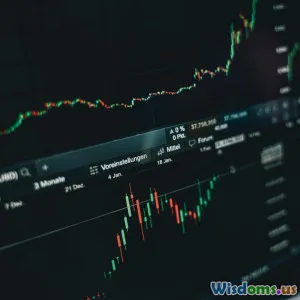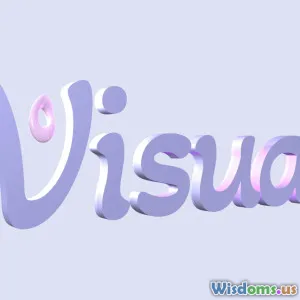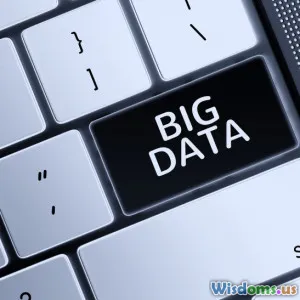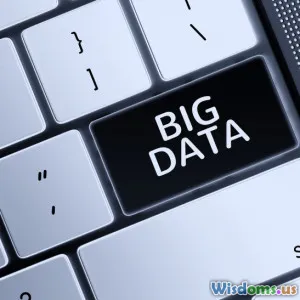
Why Choosing the Right Data Visualization Tool Changes Your Insights
8 min read Explore how selecting the right data visualization tool amplifies insights, guiding smarter decisions and clearer understanding. (0 Reviews)
Why Choosing the Right Data Visualization Tool Changes Your Insights
Data is growing exponentially, yet raw figures alone rarely tell the whole story. To truly unlock the power hidden within data sets, visualization becomes paramount. But have you ever considered how much the particular tool you choose impacts your insights? Beyond simple charts and graphs, the right data visualization tool can elevate your understanding, spark deeper analysis, and fuel smarter, data-driven decisions.
Introduction: The Art and Science of Visualization
Imagine interpreting millions of sales transactions or intricate customer behavior trends through a basic spreadsheet. Numbers blur, patterns hide, and actionable insights might never surface. Now envision an interface where these same data translate into interactive dashboards, heat maps, and story-driven charts—suddenly, narratives unfold naturally.
But it’s not just any visualization tool that will do. Each tool comes with unique capabilities, limitations, design philosophies, and ways of engaging with data. Some excel with big datasets, others integrate fluidly with complex systems; some focus on ease for business users, others empower granular technical customizations.
Choosing wisely thus becomes imperative, shaping not only what you see but how you see it—and ultimately, the decisions you make. Let’s explore why that choice matters so profoundly.
Body
1. Visualization Tool Capabilities Define Insight Quality
Every visualization tool accommodates data differently. Tools like Tableau enable drag-and-drop ease with powerful data blending, ideal for analysts seeking quick exploratory analysis. Conversely, D3.js offers scripting-based bespoke visualizations, providing maximal flexibility but requiring high technical expertise.
An example: Nielsen, the global measurement company, shifted from static Excel reports to Tableau dashboards. This intervention reduced report generation time by 70%, enabling real-time insights that empowered marketing strategists to swiftly pivot campaigns based on consumer behavior shifts.
Tools that limit you to pre-set charts might hide obscure or complex relationships in your data. Advanced tools supporting multi-dimensional breakdowns and statistical overlays unlock deeper understanding.
2. Scalability: Handling Data Volume and Complexity
A tool’s scalability crucially influences insights, especially as data grows both in volume and complexity. Consider the difference in visualizing monthly sales versus millions of sensor readings per second.
Power BI integrates smoothly with Azure’s cloud infrastructure, allowing real-time visualization of vast datasets. In contrast, some tools falter or slow dramatically, risking missed trends due to delays or crashes.
For instance, GE's Predix platform harnesses scalable visualization tools to monitor thousands of industrial IoT devices globally, enabling predictive maintenance and avoiding costly downtimes.
3. Interactivity Unlocks Deeper Exploration
Static charts are informative but limited. Tools emphasizing interactivity—such as drill-downs, filters, and dynamic queries—enable users to explore data nuances instantly, sparking discoveries.
QlikView is known for its associative data model supporting lightning-fast, user-driven queries. Users can pivot quickly among insights without waiting for reports, turning complex datasets into fluid investigative sessions.
In healthcare, interactive dashboards helped hospitals during the COVID-19 pandemic rapidly identify patient surges, facility capacities, and resource shortages, leading to agile response efforts.
4. Visual Design and User Experience Affect Insight Communication
An insightful visualization is ineffective if it's unclear or intimidating. Tools with clean, modern design options support better cognitive processing—color palettes, layout customizations, and annotation features guide accurate interpretation.
Google Data Studio exemplifies accessible, visually appealing dashboards that empower marketing teams to present campaign performance clearly to stakeholders. Effective design connects data patterns with human intuition.
As psychologist Edward Tufte notes, "Good design is clear thinking made visible." Poor tool choices may result in cluttered or misleading visuals, fueling misinterpretations.
5. Integration and Collaboration Capabilities Drive Insight Sharing
Insights are most valuable when communicated effectively. Modern visualization tools offer seamless integrations with other software, and collaborative features enhancing teamwork.
Slack integrations allow visualizations from tools like Looker or Power BI to be shared instantly, prompting real-time discussions and faster decision cycles.
A leading example is Starbucks, which improved supply chain transparency and communication across global teams through integrated visualization platforms, boosting operational responsiveness.
6. Tailoring to Audience and Purpose
Different teams and goals require different visualization approaches. Executive dashboards need summaries highlighting KPIs succinctly, while data scientists might prefer detailed exploratory views.
Choosing a tool that supports role-based views or customizable outputs ensures stakeholders engage with data contextually appropriate for their needs.
Microsoft’s Power BI and Tableau offer enterprise-grade permissioning and customized reporting to serve diverse internal audiences effectively.
7. Cost, Support, and Learning Curve Are Practical Considerations
While the ideal tool should empower insights, practical matters impact sustained success.
Open-source tools like Chart.js and D3.js offer flexibility but entail steeper learning curves and less vendor support.
Conversely, premium products come with professional support, training, and regular updates but might strain budgets. Choosing based on capacity to train users and maintain tools is essential to preserve insight quality over time.
Conclusion: Insight Potential is a Tool Choice Away
Data visualization is more than decoration—it’s a cognitive bridge between raw data and intelligence. The right tool doesn’t merely display information; it enables exploration, highlights meaningful patterns, accommodates scale, appeals visually, promotes collaboration, and aligns with organizational needs.
Neglecting this choice risks buried insights, slow reactions, or costly errors. Embracing the right visualization tool unlocks your data’s potential, transforming numbers into stories that inspire confident, data-driven decisions.
In today’s data-rich environment, your choice of visualization tool directly shapes not just what you see, but how well you understand and act—turning complexity into clarity and possibility.
Ready to elevate your data insights? Evaluate your current visualization tools against your data needs today, and make the informed choice that propels your organization forward.
References and Further Reading
- Edward R. Tufte, The Visual Display of Quantitative Information, 2001.
- Nielsen’s Tableau case study: Tableau.com
- GE Digital’s Predix Industrial IoT: GE.com
- QlikView official site: qlik.com
- Starbucks supply chain transparency with visualization: Harvard Business Review, 2020.
Rate the Post
User Reviews
Popular Posts




















